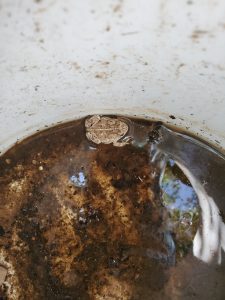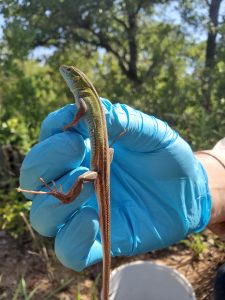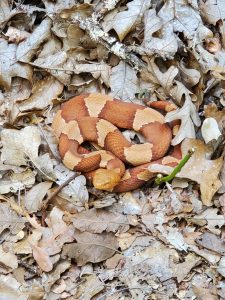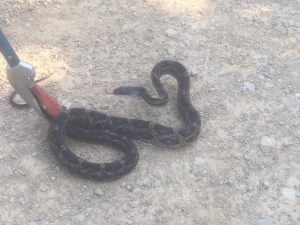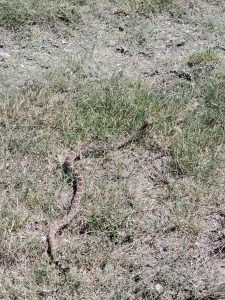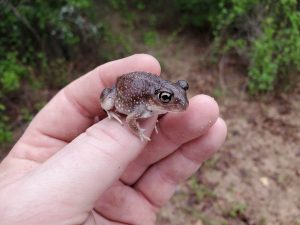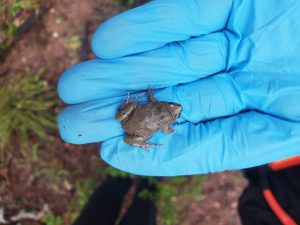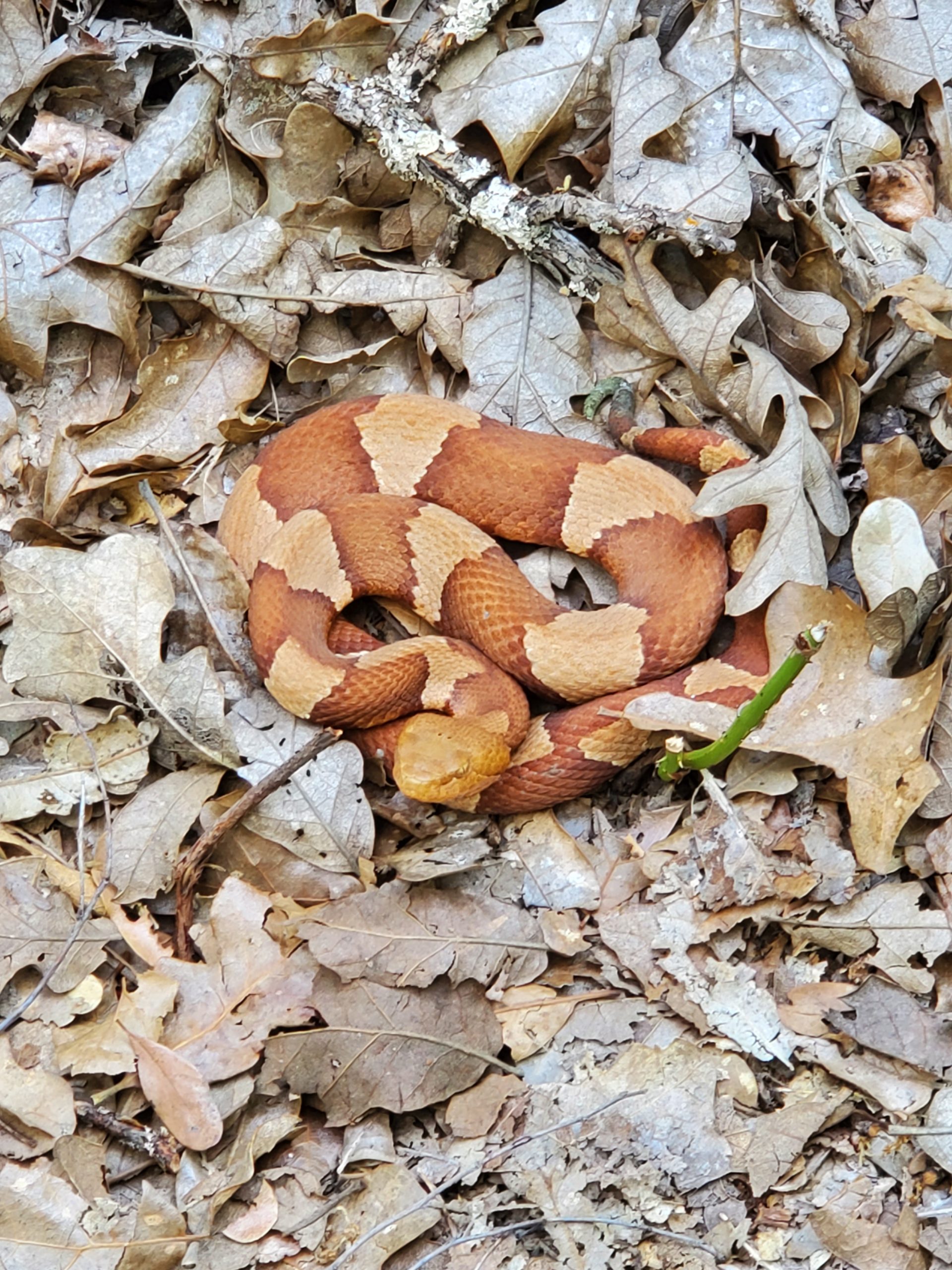One of the projects this summer for the Brant Scouts is to characterize the amphibian and reptile fauna (collectively called “herps” or “herptiles”) at Firebase Libby. This past Spring we set up 4 drift fence arrays at Firebase Libby, two in the pasture area and two in the wooded area, with the intent to capture herps to determine which species are found at Firebase Libby and to estimate the population density of each species (if possible). In addition to our drift fence arrays, we have set a couple of cage traps around the pond to catch frogs and turtles. We are also walking around searching for herps by flipping rocks or finding them on the road near Firebase Libby (a general process called “herping”).
Thus far this year we have encountered 14 species including Couch’s spadefoot (Scaphiopus couchi), western narrow-mouthed toad (Gastrophryne olivacea), Woodhouse’s toad (Bufo woodhousii), plains leopard frog (Rana blairi), Blanchard’s cricket frog (Acris blanchardi), red-eared slider (Trachemys scripta), Texas spiny lizard (Scelpporous olivaceus), Six-lined racerunner (Cnemidophorus sexlineatus), Texas ratsnake (Elaphe obsoleta), western coachwhip (Masticophis flagellum), rough greensnake (Opheodrys aestivus), western ribbonsnake (Thamnophis proximus), copperhead (Agkistrodon contortrix), and western diamond-backed rattlesnake (Crotalus atrox). Here’s hoping the rest of the summer provides more encounters with herps.
